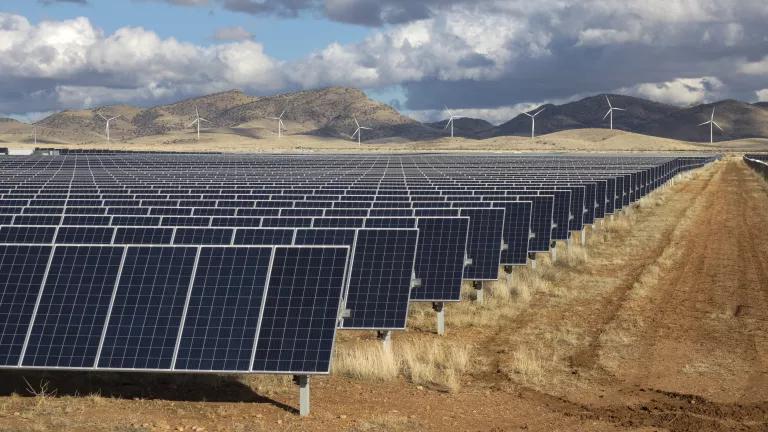Harnessing Renewable Energy on our Public Lands

New legislation would help the U.S. realize the extraordinary renewable energy potential of our shared public lands. It balances renewable energy production with enhanced environmental stewardship and is a key tool to help limit global climate change.
Representatives Mike Levin (D-CA) and Paul Gosar (R-AZ) introduced draft legislation this week that will help the Department of the Interior tap the renewable energy potential of our shared public lands. The bill—the Public Land Renewable Energy Development Act of 2019—creates key tools and benchmarks for accelerating the deployment of solar, wind, and geothermal projects as U.S. lawmakers take steps to confront the growing global climate crisis.
The bill enjoys bi-partisan support and strong industry endorsement, and it represents a major collaborative effort between conservation organizations, outdoor enthusiasts, the renewable energy industry, states, and counties. Its key provisions provide for:
- A commitment to enhance natural resource conservation and stewardship via the establishment of a fish and wildlife conservation fund that would support expanding recreational access, conservation and restoration work and other important stewardship activities.
- Improved public access to Federal lands for recreational uses via funds made available for preserving and improving access, including enhancing public access to places that are currently inaccessible or restricted.
- An ambitious renewable energy production goal for the Department of the Interior to permit a total of 25 gigawatts of renewable energy on public lands by 2025—nearly double the current generating capacity of projects currently on our public lands.
- Establishment of criteria for identifying appropriate areas for renewable energy development using the 2012 Western Solar Plan as a model. Key criteria to be considered include access to transmission lines and likelihood of avoiding or minimizing conflict with wildlife habitat, cultural resources, and other resources and values.
- Sharing of revenues raised from renewable energy development on public lands in an equitable manner that benefits local communities near new renewable energy projects and supports the efficient administration of permitting requirements.
- Creating incentives for renewable energy development by giving Interior the authority to reduce rental rates and capacity fees to ensure new renewable energy development remains competitive in the marketplace.
Balancing energy production with environmental conservation and stewardship of our public lands is no simple task. But this legislation puts forth a compelling model for doing just this. It recognizes the opportunities and need for rapidly deploying renewable energy projects in ways that are thoughtful, efficient, and promote positive environmental, economic, and social outcomes.
In our era of accelerating climate change, this balanced approach to using our public lands to help lead the U.S. toward a low-carbon future is a commonsense way for federal agencies to play a meaningful role in combatting climate change.

